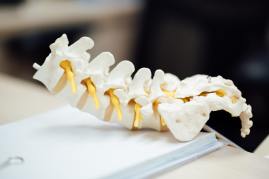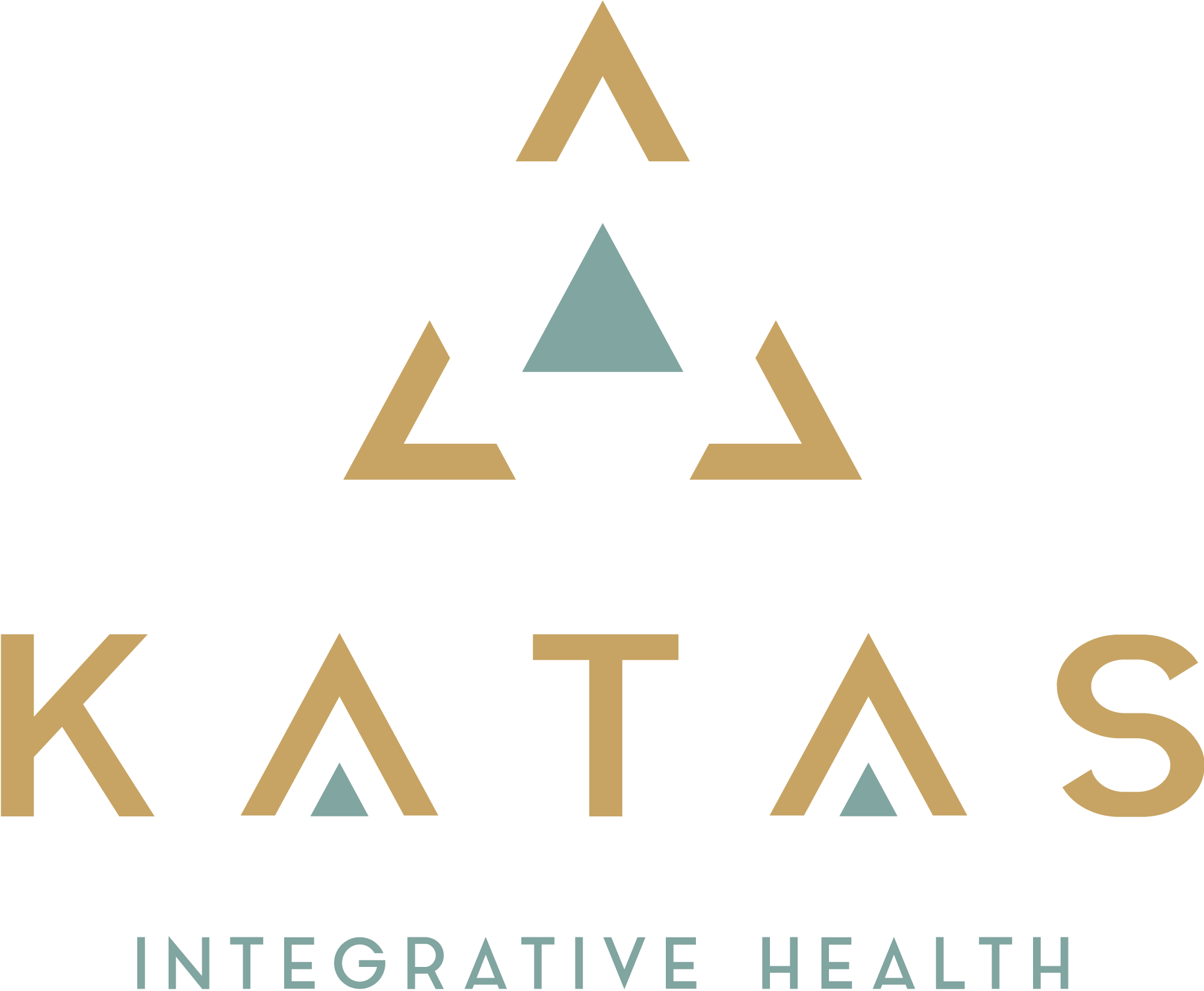The discs in your spinal cord can affect your health.
The discs in your spine aren’t usually a topic of conversation unless you develop an injury. So, let’s start by giving you a better understanding of how the discs between your vertebrae can affect your health, give you options for treating pain in the spine and explore ways you can prevent injury altogether.

Anatomy Lesson
The spine has 33 individual bones stacked one on top of each other. The spinal column provides the primary support for your body, allowing you to stand upright, bend, and twist while protecting the spinal cord from injury. Strong muscles, bones, flexible tendons and ligaments, and sensitive nerves contribute to a healthy spine and nervous system. When these structures are strained, injured, or diseased, the overall system is thrown off, and you’ll likely experience pain. Anatomy of the Spine
How everything works together
Each vertebra in your spine is separated and cushioned by an intervertebral disc to separate the bones. There are a total of 23 vertebral discs in the spinal column. Each disc has a gel-filled nucleus and a more rigid fibrous ring called the annulus. The annulus’ job is to keep the bones pulled together and act as a protective force for the nucleus. When you move, the nucleus acts like a ball bearing, allowing your spine to twist and bend. The nucleus has the consistency of toothpaste. Moving your body throughout the day provides water and nutrients to get into the disc, keeping them hydrated and your spine protected. An essential reason why movement is the best medicine.
Disc Issues and Causes
The phrase ‘slipped disc’ describes a bulging or herniated disc. It refers to the disc starting to degenerate and can no longer perform its job of keeping the spinal cord properly aligned.
A bulging disc is used to describe when a disc starts sagging and losing pressure or elasticity. Picture a hamburger where the patty is larger than the bun. A herniated disc is a term used to describe what happens when there is a tear or hole in the annulus and the nucleus fluid leaks into the spinal canal. An example would be to visualize pressing down on a jelly donut.
Discs act as cushions between each vertebra in your spine – over time, these cushions lose buoyancy and show signs of degeneration. Discs begin to dehydrate, and cartilage stiffens, leading to cracking, tearing, and other damage. Damage to the discs is often a natural result of wear and tear, but certain risk factors can increase your risk.
Risk Factors
Here are some factors that could play in or contribute to an injured disc:
Gender: Men between the ages of 20 and 50 are more likely to have a herniated disc than other demographics.
Improper lifting: Using your back instead of your legs to lift heavy objects
Weight: Being overweight puts added stress on the discs in your lower back.
Repetitive activities: If you have a physically demanding job that requires constant lifting, pulling, bending, or twisting.
Frequent driving: Staying seated for long periods, plus the vibration from the car engine, can put pressure on your spine and discs.
Sedentary lifestyle: Going from sitting at a desk all day to sitting in traffic than sitting on a couch all night can wreak havoc on your spine. Also, it is believed that smoking reduces the oxygen supply to the discs and causes more rapid degeneration.
Early symptoms that could give you a clue that disc degeneration is present:
- pain in the back during twisting or bending of the spine
- pain or tingling in the arms and legs
- pain or numbness anywhere in the spine.
Levels of pain range from minor to excruciating discomfort and depend on the disc degeneration’s location and severity.
Chiropractic Treatment
A chiropractor’s job is to evaluate the entire spine and determine a treatment plan. Treatment may include spinal manipulation (adjustments), manual therapy, and therapeutic exercises.
Your plan will be created to address and work with your pain, activity level, and overall health. As with any treatment, don’t hesitate to ask questions about recommendations and why. Understanding your health care plan puts you in control! Chiropractic Care and Back Pain: Non-Invasive Treatment for Bulging, Ruptured, or Herniated Discs
Additional Types of Treatment
- Alternate between applying ice and heat to the painful area.
- Practice daily stretching and try to stand and walk around more often.
- Maintain good posture, especially while you’re sitting.
- Make sure your mattress is firm enough to support your spine.
- Reduce alcohol consumption. Alcohol is an inflammatory substance that also slows your metabolism, thus hastening the deterioration of your bone health.
Diet
A spinal (and overall) diet should contain nutrient-rich foods that protect cells, prevent damage, and promote growth. Some call this an anti-inflammatory diet. When it comes to your diet, a good rule of thumb is to eat a variety of organic, whole foods to provide your body with the essential nutrients.
-Eat fewer foods that break down into sugar and more veggies and lean meats.
-Add more dark leafy greens into your diet – spinach, kale, and collard greens are easy to sneak into stews, sauces, smoothies, and stir-fry.
-Berries contain lots of antioxidants, which remove toxins and protect cells. Snack on berries throughout the day, blend them into smoothies, and sprinkle them onto breakfast or dessert.
-Nuts and fish both contain omega-3s, which fight inflammation. Plus, both are good protein sources, which will keep you fuller longer, and can make up for any inactivity that your injury is causing. The Best Foods for Spinal Cord Injury Recovery

Stretch and Exercise
If you suffer from back pain or want to prevent pain in the future, a proper stretching routine can help keep your spine healthy! If you already have an injury, consult with a doctor before attempting any of these moves.
Back flexion exercise: While lying on your back, pull your knees up to your chest, press your low back to the ground, and bend your neck to your chest until you feel a gentle stretch. This will stretch both your lower back and your neck.
Knee to chest stretch – Lay flat on your back and stretch your legs with your heels touching the floor. Next, bend your right leg, and bring your right knee up to meet your chest. Wrap your hands around the front of your knee or shin and hug it. Repeat on the left side.
Chin to Chest – In a standing or sitting position, gently tilt your head forward until your chin touches your chest, and hold for several seconds.
Side to Side Shoulder Stretch – this stretch can be done at your desk and should be repeated throughout the day. Bend your neck to one side as if you’re trying to touch your ear to your shoulder. Stop when you feel a gentle stretch.
Glute Bridge – Lie on your back with your knees bent and feet flat on the floor. Engage your abs and thrust your pelvis toward the ceiling while straightening your spine. Hold this bridge position for a second or two before returning to the floor in your starting position.
We all need exercise to keep our bodies strong and healthy, but some workouts are better than others. Activities such as jogging, running, tennis, and contact sports create a lot of compression in your spine. Other activities like walking, swimming, Pilates, yoga, stationary cycling, biking, resistance training, and low-impact aerobics allow the body to move fluidly. Finding a healthy balance between high-impact and low-impact activities is crucial to maintaining a healthy spine. Exercises for Back Pain
Please do not hesitate to contact our office with any questions or to schedule an appointment. Appointments are available both in-person and through telehealth – book here. We provide Chiropractic care, Functional Medicine, Acupuncture, and Chinese Cupping.



